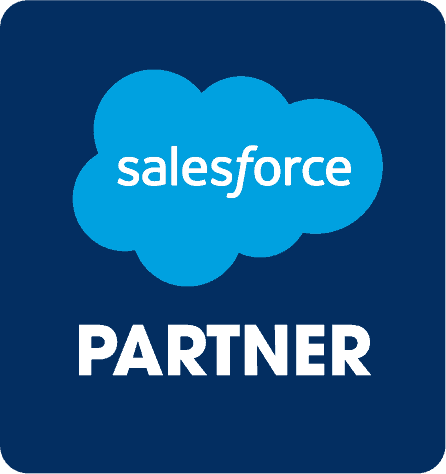5 Ideas for Digital Transformation in Construction To Address the Industry’s Biggest Challenges
The construction industry faces many challenges, especially with the pressure of digital transformation, which is quickly taking over all areas of business. In this article, we’ll highlight some of the biggest challenges hindering the industry and provide some key technology investment recommendations.
In 2024, businesses in the construction industry will succeed or fail based on their ability to mitigate uncertainty. As tired as professionals may be of hearing that their industry is a laggard in digital transformation, engineering, and construction may be on the verge of getting a whole new reputation – that of the digital innovator.
In fact, the gradual pivot of organizations in all sectors of construction is being noted as a new era for investing in enterprise-level initiatives, as opposed to project-level focus. The optics for commercial, residential, and public construction and development are looking bright, as more digital strategies are being embraced to address pandemic-related issues of supply shortages, labor shortages, and growing demand. As Deloitte states, “[they will] help other industries unlock the future of workplace solutions.”
So, as a business that is historically behind the ball on digital transformation, how does any Architecture, Engineering, and Construction (AEC) organization begin to ease into an accelerated pace of adoption? Digital maturity depends on the ability for business and IT to look collaboratively at places where technology investments will increase operational efficiencies at an enterprise level. That’s easier said than done, as we have seen first-hand that it is often a challenge to acknowledge such an investment, and cultural change could have an immediate impact. In reality, the agility of newer SaaS and cloud solutions, combined with at least one visionary executive champion, will immediately put the organization at an advantage to weather the long-term pandemic impact.
Smartbridge has also strategically diversified our portfolio of digital services to stay resilient. From our experience with our public and commercial construction clients, we recognized there are a handful of key places where the best ROI and time to value are realized. So rather than keeping it a secret, we want to share a window into what those are. Here are a few key technology investments based on the biggest opportunities for growth in the construction industry.
Industry performance across various segments has been mixed this last year, but these five areas for digital transformation benefit residential, commercial, and public construction.
Challenge #1
Labor shortage and skills gap in construction workers continues, leading to an increased need to evolve training and onboarding to retain workers and adapt to new digital skillsets.
Traditional hiring, onboarding, and training may not meet the urgent needs to backfill the 200,000 to 300,000 worker shortage. Investing in digital technologies to streamline the process, yet retain productivity and safety standards, is one way to close the workforce gap.
Key Technology Investment: Automate key workstreams to increase productivity with Robotic Process Automation and Generative Conversational AI.
How can a shift towards digital support training initiatives increase efficiency and onboarding?
There are two mechanisms in which automation can be deployed to support HR and recruitment functions. We have seen success with both of these approaches and anticipate growing demand for automating the employee lifecycle.
Automating Human Resources in Construction with Generative AI:
Automating Human Resources in Construction with Robotic Process Automation (RPA):
A bit about RPA
You’re likely aware of the uptick in companies accelerating their Robotic Process Automation (RPA) journey. RPA is a technology that imitates humans’ actions within computer systems with the use of bots. It is associated with mundane, repetitive, rule-based tasks that usually consume too much time when executed manually.
While it may sound intimidating, the cost and complexity of deploying RPA since the pandemic has decreased, and more options (like intelligent automation) have evolved.
Automating Training with Generative AI:
Automating Training with RPA:
A bit about AI & ML
Artificial Intelligence/Machine Learning (AI/ML), when applied to mechanisms such as RPA, can elevate their ability to deliver intelligent outcomes.
Take, for example, the HR example to handle applicants. By adding AI, you can improve document understanding for advanced routing and identification of key document attributes.
Once a successful RPA pilot is deployed, most companies begin focusing on hyperautomation, as a way to discover and deploy automations at an accelerated pace. AI-enabled hyperautomation for document processing is one of those well-established proven deployments.
Challenge #2
Construction’s large customers are going through a digital transformation journey. They are mandating their suppliers and contractors to digitally integrate with their systems and processes. They expect companies to be digitally mature to do business with them.
Every organization must establish a business transformation strategy in which they reimagine how they interact with their customer to deliver an exceptional experience, create stickiness, and make it difficult for them to go to other competitors. Apply digital technologies to seamlessly integrate with customers (systems and processes) to achieve this holy grail of business transformation.
Key Technology Investment: A digital transformation strategy that encompasses API integration, Self-Service Portals, Data & Analytics, and Automation.
Some industries such as retail, finance, and oil & gas are ahead of others in embracing and executing their digital transformation journey. Construction companies are no different. They service customers similar to companies in these industries. They can learn from and adapt best practices, methodologies, and tactics from these industries, and apply what makes sense for them in their journey. To succeed, they must first establish a clearly articulated business transformation strategy that will drive their digital transformation technology stack.
The digital strategy must address systems rationalization and modernization, omnichannel customer engagement, digital-enablement of operations, harness data with intelligence to grow the business, and automate where possible (Hint: keep reading!). Provide transparency in your service to customers through API integration, customer self-service portals, provide performance reports and dashboards (KPIs, SLAs), and eliminate friction in your customer interactions with automation. These tactics will create stickiness with your customers and create long-term relationships.

Challenge #3
Expanding portfolios through alliances, mergers, and acquisitions to reduce exposure and vulnerabilities.
Construction firms are expected to increase M&A activity, according to a recent Deloitte poll of engineering and construction executives. In addition, more unconventional partnerships are on the rise as well, in the forms of alliances and public-private partnerships. The effort to diversify and acquire specialty firms will aid companies in becoming more resilient against recessions and keep underperforming segments from tanking revenue goals.
Key Technology Investment: A modern data & analytics architecture in the cloud.
Merging a newly acquired company’s applications and data into the parent company is an all-consuming task. A modern cloud data architecture and platform will increase the speed and consistency during this pivotal time.
The ideal approach is to have pre-determined and approved data and cloud technical standards. It’ll result in a less technical business system analysis when the two merging companies have competing applications or data platforms (these could be on-premise or cloud-based systems).
The cloud enables necessary infrastructure to be set up with a click of a button rather than months of capital approvals, purchase orders, and business approvals. This means quicker M&A KPI tracking and visibility, all credited to a modern cloud data architecture.
The evolution of connected construction promises project success simply because business is embracing the cloud. A great example on the rise involves the tracking and detection of fraud in equipment fuel usage as a result of digitized equipment sensors. This and many other examples like it couldn’t be done under the old processes. But when digitally transformed, it unlocks the data, analytics, and value to drive success.
Challenge #4
Supply chain insufficiencies and raw materials prices combined with soaring demands.
The projects are there, but the resources aren’t. Land, people, raw building materials are all places of insufficient supply. To keep your profit margin intact, real-time insights into pricing, availability, and your options are paramount.
Key Technology Investment: Salesforce for bid and proposal management.
For most industries, Salesforce is seen first as a Sales and Marketing tool, followed by vendor management. However, in construction, there is a strong case for Salesforce as the hub for visibility into all the activities behind the deals.
Construction professionals may wish to incorporate specific construction project data related to sales opportunities. Salesforce can be configured to track bidding information on viable projects, such as opportunity name, bid dates, contract value, construction type, sales stage, and market segment.
Does your entire team have the ability to review and respond to bids from anywhere? Preparing a bid packet is typically more complex for the construction industry than for others. If your Salesforce organization lacks the ability to report on historical bid and project data, as well as mobile access to the bid packets, you’ll continue to fall further behind with limited Salesforce resources.
Challenge #5
ESG is requiring construction firms to find a solution to their lack of integrated visibility into processes and subcontractors.
Amid all the core challenges related to simply doing business and staying profitable, here come ESG requirements. To adopt sustainable technologies in a project-based world will impact how operators evolve supply chain management over time.
Key Technology Investment: ESG data & analytics
Emphasis on ESG will just continue to grow over 2024 and beyond. Creating your ESG data model now is a great first step. Some of the goals seem distant, but we are already running late! The improvements take time, and you can be assured that it will be harder and harder to find companies to do the work when there is a rush as we get closer to the deadlines. Availability will be tight, and costs will increase as more companies vie for the same vendors and resources.
The goals have been established, and you already have at least some of the data that you need. Start the process.
In their report, Deloitte mentions, “technologies such as big data and AI/machine learning can help companies track their overall carbon footprint.”
Feeding all this data may require digital maturity and robust data management capabilities. ESG reporting is becoming more and more critical to our clients, our shareholders, and the world. Now is the time to start the process of collecting data, planning actions, and model validation.
The technology investments that architecture, engineering, and construction firms need to make will be the foundation for a connected enterprise that is required in today’s environment. Moving from stand-alone project-related issues, and looking towards enterprise-level business problems will give firms the access to information, analytics, and insights they need.
When you’re ready to tackle your next digital strategy, we recommend a call with a Smartbridge subject matter expert to assess your environment and discover what’s possible.
Sources for this article: Deloitte 2023 engineering and construction industry outlook
Looking for more on construction?
Explore more insights and expertise at smartbridge.com/construction-industry
There’s more to explore at Smartbridge.com!
Sign up to be notified when we publish articles, news, videos and more!
Other ways to
follow us:









